What is raspberry maple and how to grow a shrub?
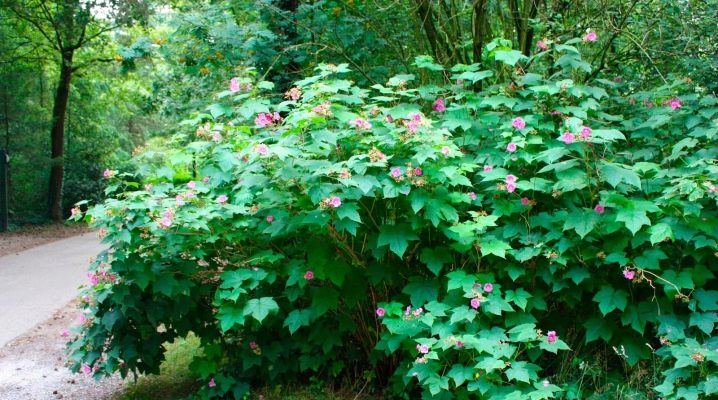
Raspberry bushes, from which you can collect delicious berries, are the most common variant of this plant. But there is also a maple-raspberry. This shrub bears fruit, but is prized solely for its unusually beautiful and large flowers, as well as for its pleasant raspberry aroma. In order for the plant to have an attractive appearance, it must be properly and regularly maintained.
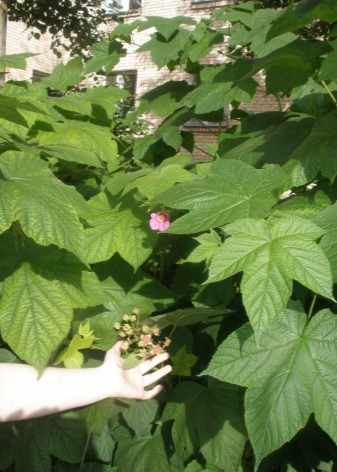
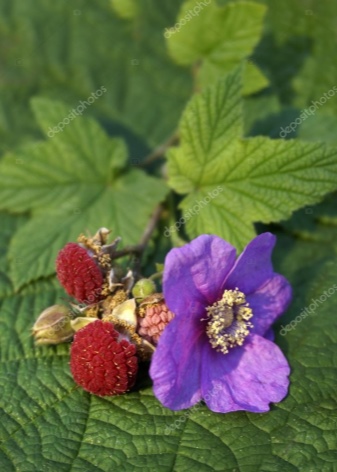
general description
Maple-raspberry, or fragrant raspberry, is a shrub that does not produce particularly tasty berries (although there are fruits), but it is actively used in landscape design. When looking at it, the first thing to notice is the large green leaves, which are shaped like maple leaves. They can be three-layer and five-layer. The largest specimens can reach 15-20 cm in width. In spring and summer, the leaves are dark green or light green. With the arrival of autumn, it changes to yellow.
But in fairness, it should be noted that large leaves are far from the only advantage of the raspberry maple. Flowers, which are placed in a chaotic manner around the entire perimeter of the bush, attract no less attention. They are also quite large - the diameter is 5-6 cm.
The inflorescences are white or pink with a golden middle. They can be both single and in inflorescences. It is noteworthy that the flowering period begins in June and ends only in September. After that, large berries ripen.
In terms of taste, they are significantly inferior to those of ordinary raspberries. Due to their sweet and sour taste, they are more suitable for processing.
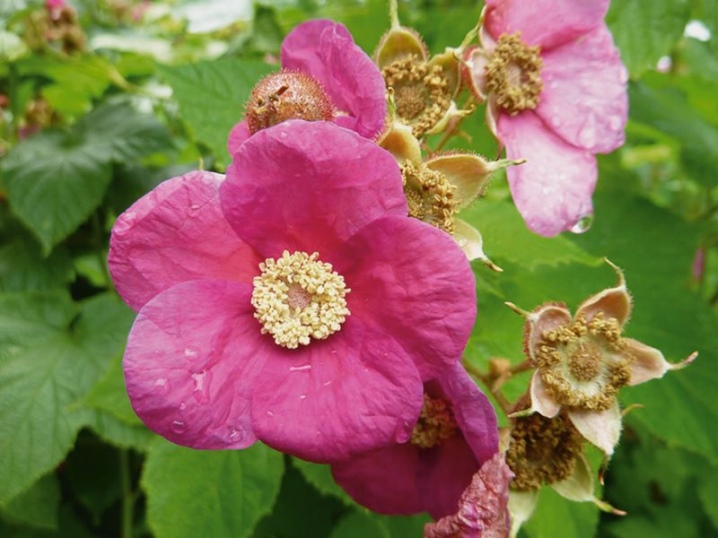
Another advantage of raspberry is that there is a specific pollen on the shoots. If you touch them with your hands, the pollen will remain on your palms, and for some time you can feel a pleasant aroma. That is why the plant is often called fragrant raspberry.
In nature, you can find raspberries, the height of which reaches 3 meters. But cultivated variants have more modest dimensions. So, shrubs rarely exceed 1.5-2 meters in height.
Despite its many advantages, the plant has one disadvantage. It lies in the fact that raspberry is susceptible to various diseases. And also often it is attacked by insect pests: raspberry fly, aphid, raspberry beetle, stem gall midge.
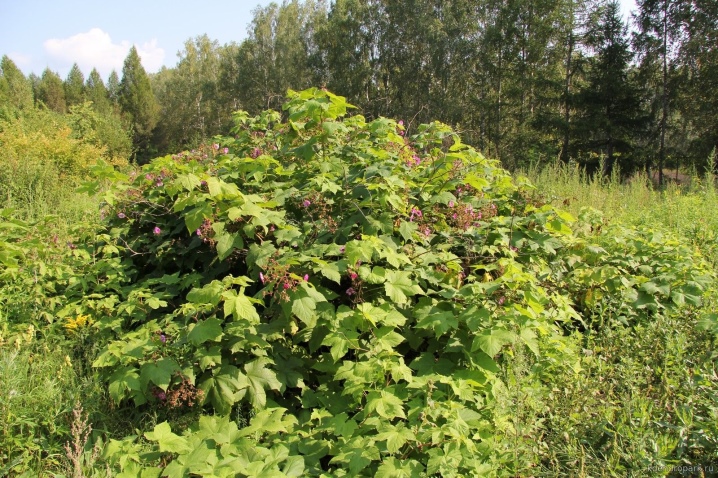
Planting and leaving
Malinoclen is recommended to be planted in pre-fertilized soil. It is best to choose sunny areas, however, due to its unpretentiousness, the plant will take root in a darkened place. The only difference is that the color of the leaves will be more brownish.
Malinoclene is a potential aggressor, as it grows rather quickly, occupying the available free space. When it ends, raspberry begins to attack other plants, gradually surviving them from the territory. The distance between the seedling and other crops should be at least 60-80 cm.
In order for the raspberry not to grow throughout the entire site, and also to have an attractive appearance, it is recommended to systematically cut it off, while removing excess shoots.
In order for the decorative raspberry to bloom and bear fruit, it must be regularly watered in sufficient volume.
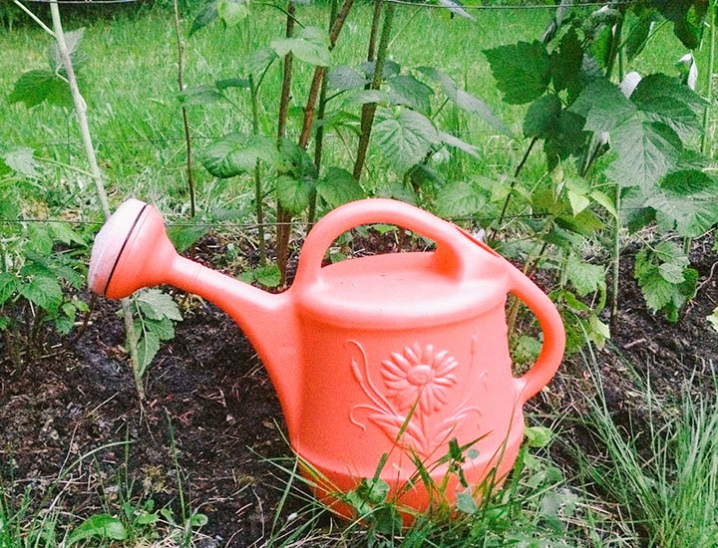
And also systematic feeding is recommended. The most valuable are nitrogen fertilizers in early spring. Complex mineral fertilizer is well suited for summer feeding (the best time for introduction is June). In the fall, they are fed with organic matter, but this should be done no more often than once every few years. Too acidic soil is detrimental to this plant. In order to prevent acidification, it is recommended to periodically pour ash under the bushes.
The plant is considered frost-resistant, so you don't have to worry about winterizing it. If cultivation is planned in a region with extremely cold winters, you can press the stems to the ground in the fall and cover them with spruce branches. In the case when the plant is exposed to any disease, it is necessary to carry out appropriate treatment. To get rid of fragrant raspberries from insect pests, it is recommended to treat it with a solution:
- colloidal sulfur;
- bordeaux liquid;
- "Fitosporin-M".
Treatment can also be carried out as a preventive measure.
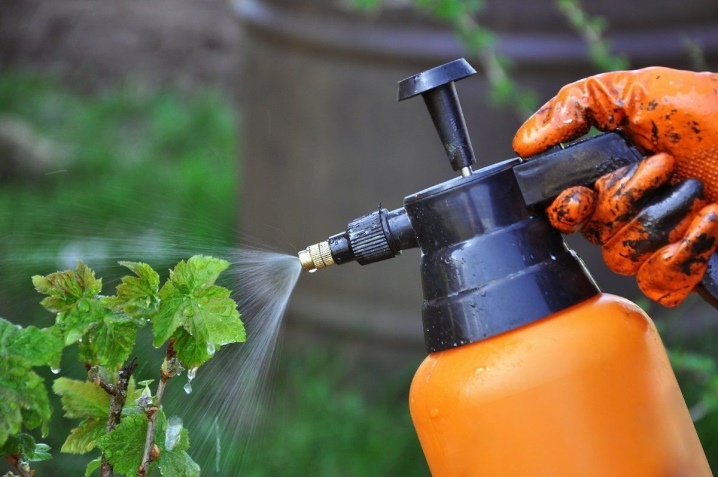
Reproduction
Ornamental raspberries are propagated by root shoots or cuttings. The second method is considered to be advantageous. The roots can give young green shoots. But in order for this to happen, in most cases it is necessary to use growth stimulants.
There is another way - seed propagation, but it is rightfully considered very difficult. First of all, the difficulty lies in the purchase of seeds (not all stores can buy these). And also the process of hatching is quite difficult: first you need to plant the seedlings, and only then transfer them to open ground. Of course, you can try to hatch the seeds yourself, having obtained them from the fruits. But this process is also no less laborious and time consuming.
If you want to get a healthy plant, it is better to use cuttings.
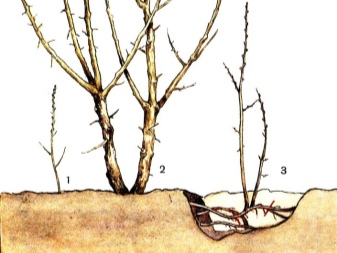
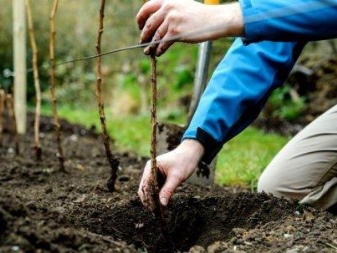
Application in landscape design
Ornamental raspberry bushes are very often used in landscape design. Due to the size of the shrub, designers recommend placing the bushes in groups, not far from free standing trees. But there are also other options for the location of raspberry on the site:
- small islands on both sides of the garden paths;
- as a decoration in areas covered with a lawn;
- near fountains, benches and other structures.
The most important rule is to maintain the distance between the bushes (at least 60 cm), as well as timely processing so that the raspberry tree remains attractive in appearance.
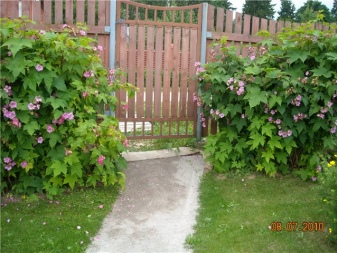
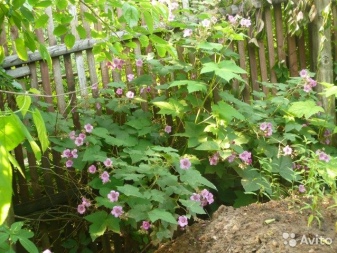












The comment was sent successfully.